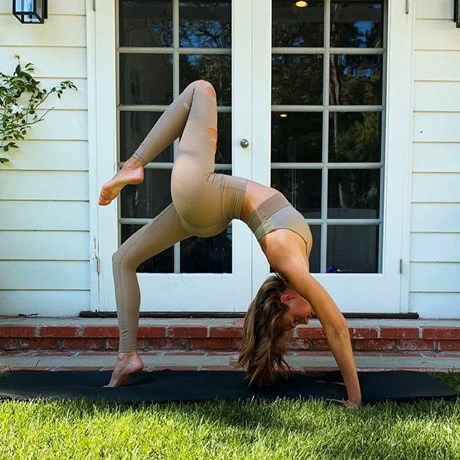
During the height of the COVID-19 pandemic, the gyms hunters utilized to stay in shape had to close their doors while the world was forced to shelter-in-place. That caused some of us to gain a few extra pounds, and possibly see a decline in our overall health.
I’m in the unique position of being a strength coach for elite-level athletes and a hunter. I also create workout regimens for outdoorsmen and women through Healthy Hunter which promotes better health and fitness.
Like many hunters, I live in the country, and not close to a gym. So even before COVID began I had set up at-home workouts my wife and children could participate in alongside me. I know many of you are returning to the gym, which is great. But if you want to supplement those workouts with ones at home, or maybe, you just want a more convenient space to sweat, here is a simple program that will keep you in shape. You don’t need to be a pro athlete or even a mountain athlete to benefit from this workout. All you need is your hunting pack and a few common items found in your home to get started.
Rucking
As hunters, we often find ourselves walking with a backpack through the woods. Walking while carrying a loaded pack is commonly referred to as “rucking” and is one of the simplest exercises you can do. Rucking is not just for those prepping for a backcountry hunt. It will help condition any hunter that has to walk. So pheasant hunters, treestand deer hunters that must hike in, and run-and-gun turkey hunters will all benefit from rucking. Hiking at a moderate pace of 3 mph has cardiovascular benefits equal to jogging with less stress and damage to your body.
Day after day of carrying heavy loads for distance helps shed weight too. And those that need to gain muscle will find themselves stronger. To get the strength and cardiovascular benefits of rucking you only need to carry 5 to 10 percent of your bodyweight.
To begin, put on a pack loaded with 5 percent of your bodyweight. For example, it you weigh 200 pounds, that’s 10 pounds. Maintain proper posture while you hike. Stand tall with your head up, shoulders back, and focus on the hips and glutes to provide power during the walk. There’s no need to run, just keep a steady pace. Push yourself and set a goal of a 20-minute mile or 3 miles in an hour of rucking.
Over time, increase your walking distance and time. Completing a one-hour rucking session three times a week will have you primed and ready for most outdoor adventures.
Farmer’s Walk

Build endurance and strength with the Farmer’s Walk.
Have you ever heard the term “farmer strong?” It’s not a myth. They spend years picking up heavy hay bales and throwing them on a truck or into a loft. Their bodies adapt, build muscle, and they can crush your hand inside of theirs when you go to shake it.
The farmer carry or “walk” is a fundamental exercise that I include in every workout program. Standing up tall, hold a small daypack full of the supplies you take afield or a milk jug filled with water in one hand. Walk slow and controlled keeping good posture with the body upright not allowing yourself to lean or waddle to one side or the other. Start by walking 10 feet before turning around and returning to your starting location. Switch hands and repeat the 20-foot round trip walk. Do five rounds of this down and back alternating hands. As your fitness improves, the distance and weight carried should be increased.
3. Pull and Drag
The pull and drag is good fro working out back muscles.
Many of us rarely exercise our back muscles causing weakness and imbalance, which also leads to poor posture. When we need to use them, like for packing out a deer or elk, it can result in injury. To improve back strength and minimize the chances of hurting yourself, the bag drag is an ideal workout. As a hunter, this exercise is one of the most functional you can add to your program. If you need to drag a deer, or pull a buddy out of a creek bottom, the bag drag will have you ready.
Start by tying a rope or hose to the top of your pack and placing the pack on the ground. Extend the rope away from the bag creating tension in the rope. Squat down as if sitting in a chair and grasp the rope with both hands. With arms extended and the rope tight, pull your hands towards your stomach, dragging the bag closer. Take a step back to tighten the rope and pull the bag close again.
Complete five rounds of 10 reps taking the minimal rest needed to recover between sets. If you are limited on space, eliminate the step back and pull the rope hand over hand to drag the bag closer to you.
Creating your own gym at home will eliminate excuses for not working out. There is also no waiting for others to finish with the equipment and no monthly fees to pay, except for your mortgage. Plus, you can even incorporate shooting your rifle or bow into the activities, so you learn how to shoot when fatigued or under stress. But more importantly, these simple workouts will keep you in good health.

A skilled hunter, dedicated conservationist, and advocate for ethical practices. Respected in the hunting community, he balances human activity with environmental preservation.
